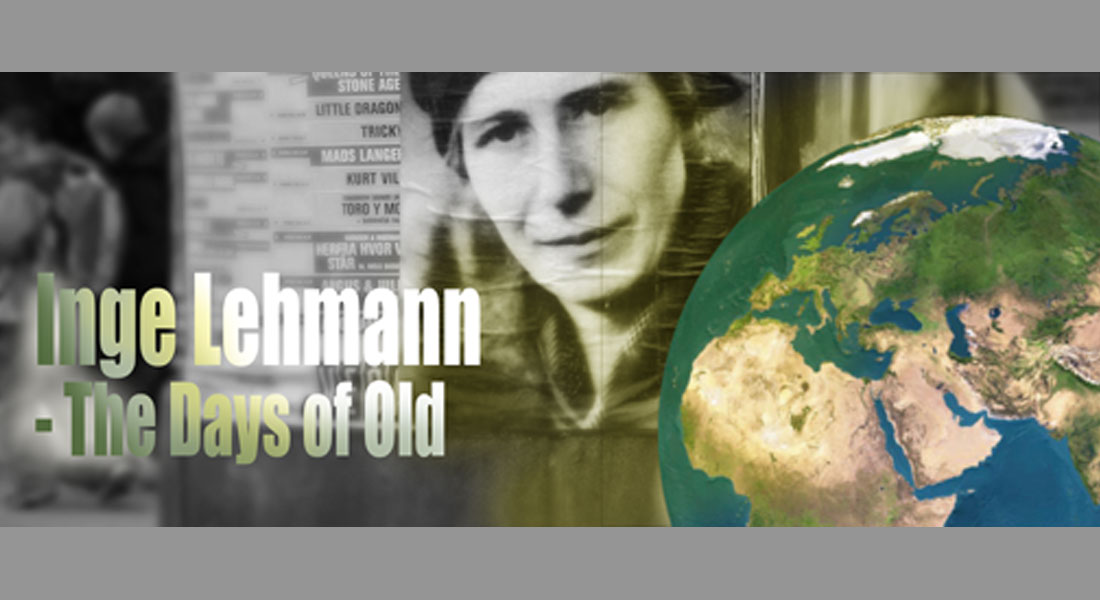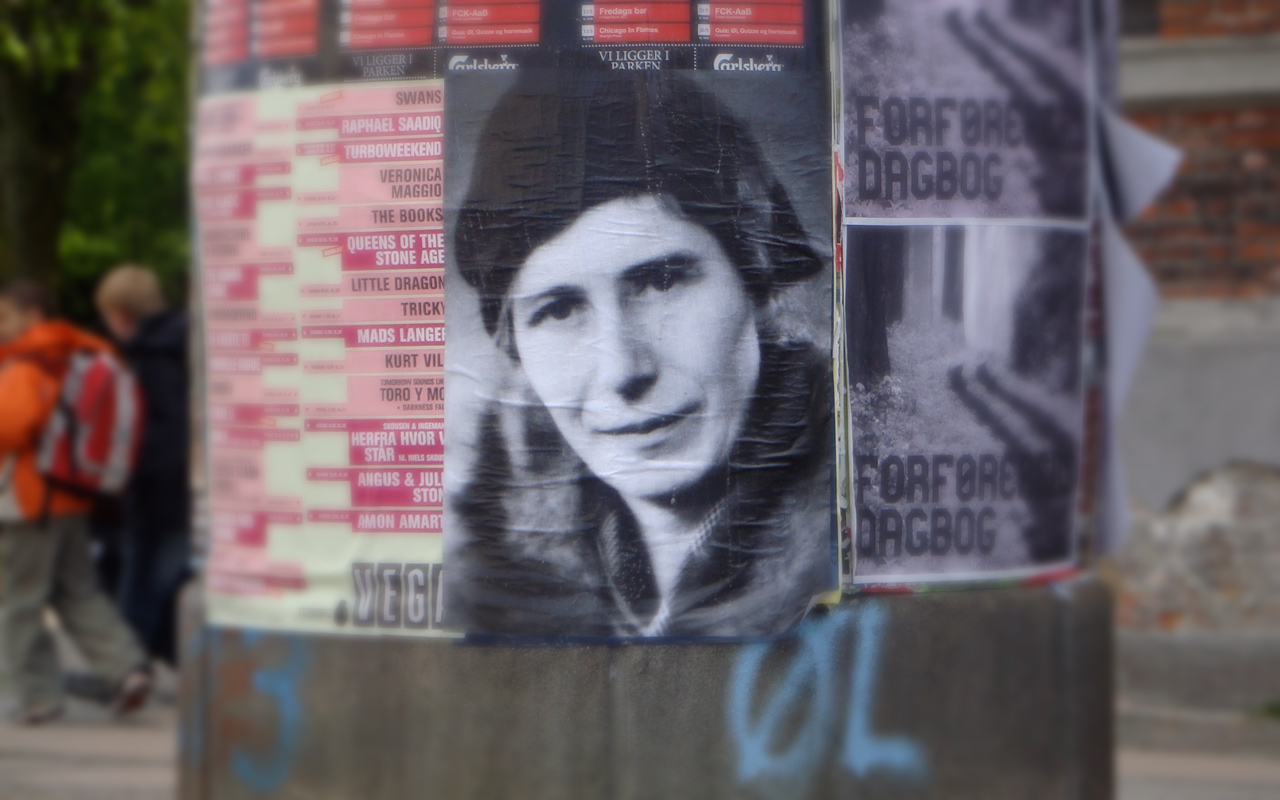Days of Old
Over her life, Inge Lehmann manages to become a central figure in international geophysics and seismology and shortly before her death she says that she has had a life with “many victories and good memories”.

When Inge Lehmann is hired as Niels E. Nørlund’s assistant at Den Danske Gradmåling in 1925, no one expects research from her.
But despite the fact that publications and articles are not her main focus through her long research career, she still manages to produce 58 publications – and over half of them are from after her retirement in the early 1950s.
The final trip
When she receives the prestigious Bowie Medal in 1971, Professor Francis Birch also says teasingly:
“Since her retirement from the Geodetic Institute, Dr. Lehmann has increased her rate of publication, which is understandable, since she no longer has to worry about keeping someone on the job at Scoresbysund!"
But even for the active Lehmann, age starts encroach and she visits the geological observatory in Lamont, New York, for the last time in 1971.
“She was not easy”
The author of the biography, Inge Lehmann and the Earth’s Core (2005), Bjarne Kousholt, interviewed people who knew Inge Lehmann while working on the book and they all said: “She was not easy!”
His characterisation of her reads: ”She was sensitive, easy to offend and her self-irony was limited.”
But she was also known for her incredible energy – even in old age.
As a 99-year-old in 1987, she writes, for example, her last work, Seismology in the Days of Old, which can be described as a shorter version of P’.

Because she was a woman
Both in her own time and her posterity, Inge Lehmann was primarily known for what was perceived as her somewhat ‘special’ method for reading seismograms.
It was almost ‘intuitive’ and like ‘black magic’, they said, but a professor of geophysics from the Niels Bohr Institute Klaus Mosegaard believes that this underestimates her.
“I think it was because she was a woman that they said that. They probably had a hard time believing that she could be just as good as sharp rational and mathematical thinking as men and so they had to try to explain in away in that way,” explains Klaus Mosegaard.
“When I look at the work she did, there is nothing particularly ‘feminine’ or ‘intuitive’ in her method. She just did it better than most others and there were probably some men who had difficulty accepting that,” he adds.
But compared to her enormous contribution to international seismology and geophysics, then she did not publish very many articles during her long life. When she stops at the Geodetic Institute in 1953, she does not do much to pass on her knowledge to her successor.
“A long, rich and satisfying life”
The same can be said about her life in general and a great deal of knowledge was lost with Inge Lehmann, when she dies in the early 1990s.
"It is a great pity that greater efforts were not undertaken to persuade her to – in more detail – to write her memoirs ...
Bruce Bolt, professor i seismologi, 1997
Before then - in 1988, when she turns 100 – a reception is held for Inge Lehmann at the Geodetic Institute attended by some of the best researchers and professors in geophysics from both sides of the Atlantic.
Here, many speeches about her achievements and her role as a researcher and scientific pioneer are held and later she likes to sit and listen to tape recordings of the speeches …
When she is hospitalised during her last days, she tells her nephew Niels Groes: “I have been thinking about my life. It has been a long, rich and satisfying life with many victories and good memories.”
She dies 21 February in 1993, 104 years old. Her fortune is given to a fund administered by the Royal Danish Academy of Sciences and Letters and an annual award is made alternatively to a psychologist (in honour of her father) and to a geophysicist.
Epilogue
Inge Lehmann lies today in Hørsholm cemetery, buried under a small, modest stone and of course next to her father, Alfred Lehmann.
In 1996, The American Geophysical Union establishes the so-called ‘Inge Lehmann Medal’, awarded in odd years and given for outstanding contributions to the understanding of the structure, composition, and dynamics of the Earth's mantle and core”.
Inge Lehmann received honorary doctorates from Columbia University, New York and from the University of Copenhagen. She ended up receiving numerous international honours late in life.
Read more about geophysics:
- See the Niels Bohr Institute’s website for geophysics
Forgotten in Denmark

"I'm terrified to hear that. It's completely ridiculous. I have to say that it puts the Danes in a very bad light, or at least the Danish men!"
This is how professor of geology from the University of Colorado, Peter Molnar, exclaims when Weekendavisen in 2014 tells him that Inge Lehmann is not known in Denmark ...
An unexpected gift

In the early 1980s, Inge Lehmann can be said to briefly resume her American commitment ...
It happens when she chooses to donate a small amount of money as a gift to the female seismology student Katharine Kadinsky-Cade from Cornell University in the state of New York in the USA.
$ 793.62
She asks one of her American friends to find a young, promising, female seismologist in training who she can donate the money to, and in 1982, Kadinsky-Cade unexpectedly receives $ 793.62 from the now 94-year-old Lehmann.
"We wrote together afterwards, and she wrote, among other things, that when she was my age, she had never heard of seismology," recalls Katharine Kadinsky-Cade, who is still working at the university in 2015.
"Later she wrote that I could spend the money on just what I wanted, on work or pleasure. She wrote that she herself usually spent her holidays in the Alps or went cross-country skiing in Norway, but that I might have other interests, "Kadinsky-Cade tells Weekendavisen.
